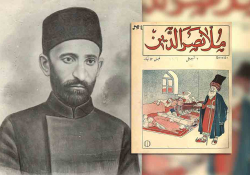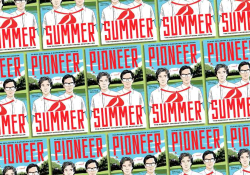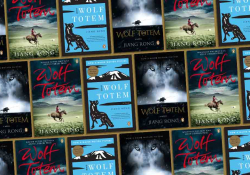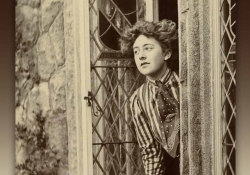The Translators behind In Translation: A Conversation with Esther Allen and Susan Bernofsky

In May, Columbia University Press released the collection In Translation: Translators on Their Work and What It Means. With eighteen essays from contributors including Peter Cole, David Bellos, and Haruki Murakami, the book offers a behind-the-scenes look into the mindscape of the literary translator. It tackles questions of the translator’s identity and the nature of translation, providing both a detailed discussion of specific issues and a wide-ranging overview for newcomers to the field.
Prolific translators Esther Allen and Susan Bernofsky compiled and edited the new collection, and in this week’s edition of Translation Tuesday they answer questions regarding the book and their own perspectives on the craft of translation. The second half of this two-part interview will appear next week.
On In Translation
 Arthur Dixon: How did this compilation of essays come about? Why is it particularly important to write and read about translation at present?
Arthur Dixon: How did this compilation of essays come about? Why is it particularly important to write and read about translation at present?
Esther Allen: We’ve both been teaching translation workshops for years and are always seeking out writing about translation by translators that can help frame the practice for students. When our editor, Philip Leventhal, suggested putting together an anthology of essays by translators, we agreed it was a great idea. While our book contains previously published material that is of particular pedagogical and artistic value, more than half of the essays appear here for the first time; we sought them out from people we’d seen delivering excellent papers or people whose work we know well.
You’re very right that the book appears at a particularly interesting moment. There was a huge shift toward translation in the aftermath of 9/11—just think of the wave of translation-focused initiatives that have emerged since then, including Words Without Borders, which just celebrated its tenth anniversary, any number of translation-oriented publishing houses and academic translation centers, the Heim Translation Fund, more recently the Best Translated Book Award, etc. In 2011 the MLA established its guidelines for translation as scholarship, making translation safer for professors everywhere, and last year saw the first best-selling book about translation: Is That a Fish in Your Ear? by David Bellos, one of our contributors. Meantime, and perhaps not coincidentally, the portion of the Internet that is in English has plummeted from a high of 90 percent to its current level of about 25 percent. English speakers are going to have a harder and harder time sustaining the illusion that translation isn’t relevant to them.
On translating and time
AD: Michael Emmerich’s essay touches on the fact that a translation is inevitably a reevaluation of a text at a later point in time as well as a switch from one language to another. What impact does this temporal difference have on translation?
Susan Bernofsky: Michael is speaking there about translations of older works (which not all translations are, of course). It’s definitely an issue: what to do with the temporal gap between original and translation. Some translators think it’s desirable to stick to current language use regardless of the age of the text. I’m in the other camp. I think it’s important for a translation’s language to honor the temporal gap whenever possible. The goal isn’t to create a “fake old” text but rather to write in a way that points to the oldness of the original by using the occasional old-sounding word or locution, but knitted into the texture of the translation such that it doesn’t stick out as anachronistic. To this end, I have gotten into the habit (for my older translations, e.g. Walser, Gotthelf, Schleiermacher, etc.) of looking up all the words I use in the Oxford English Dictionary so as to rule out words that were not yet in circulation in English at the time the original was written. This is a lot of work, but it produces a translation with a texture that feels more appropriate to me than that of a translation that disregards chronology. Older authors tend to be older in more ways than just vocabulary, and if you plop them in a linguistic time machine, they can easily wind up sounding naive or just plain foolish.
AD: Eliot Weinberger suggests that the political scene of the early twenty-first century greatly impacted the prevalence of translation. What elements of the present global political, social, or cultural scene do you see as particularly significant for literary translation?
EA: The translation of science is a question that has intrigued me for a long time. During the second half of the twentieth century, English became the global language of the hard sciences, and most scientific articles worldwide were published in English no matter where the scientific journal happened to be based (with notable exceptions such as the former Soviet Union). In other words, all science was self-translated by its authors or their associates, to be published in a single language. This trend spread to the social sciences as well, which was dismaying to many and gave rise to the Social Science Translation Project of the American Council of Learned Societies, spearheaded by Michael Henry Heim in the mid-2000s.
However, it would appear that the monolingual tendency in science has begun to abate. Among the many reasons for the change that might be hazarded is the fact that the Internet, dominated by English in the 1990s, has now expanded to such a degree that English accounts for only 27 percent of its content, a percentage that continues to dwindle. Be that as it may, no less an entity than the US Department of Energy has responded to the increasingly polylingual nature of scientific discourse by creating a website—worldwidescience.org—that bridges scientific databases and portals across ten languages. If the hard sciences themselves are retreating from monolingualism, it will be interesting to see what larger consequences that entrains. Of course worldwidescience.org relies on Microsoft translation software to bridge its different languages, and so far my attempts to use the translation tool have been entirely futile. But at least the site’s very existence acknowledges linguistic plurality in a field that tends not to.
On foreignness
AD: Is David Bellos correct that a novel translated from French to English should give the English reader “the vague impression of having read a novel in French”? Is it part of the translator’s duty to preserve some element of the original language, and how can that be accomplished?
EA: Translation is a situational form of knowledge; that’s what makes it so endlessly interesting. Each text, each paragraph, each sentence contains a world of possibilities, and the translator must be attuned to all indicators, external theoretical and political contexts and nuances internal to the text itself. To give an example, when I translated Rex by José Manuel Prieto, I rarely used anything but English. Rex is narrated by a man so obsessed with Proust that he believes all knowledge is embodied in Proust’s work. This conviction leads him to dismiss the study of foreign languages as pointless, for Proust’s text will remain inviolate and true no matter what language one reads it in. But when I translated Encyclopedia of a Life in Russia, an earlier novel by the same author, the text itself was already chock-full of linguistic diversity, and its internal logic required even more of that in the translation, which ended up including long passages in French, Spanish, Japanese, Hebrew, etc. Two novels by the same author, both bearing the unmistakable hallmarks of his style—yet each demanded a very different approach in this respect. Incidentally, Prieto’s contribution to our anthology, a meditation on his translation of Osip Mandelstam’s Epigram Against Stalin—which includes the poem in its Russian original, in Prieto’s Spanish translation, and in my English version, based on Prieto’s Spanish, has been described to me by two Slavicists as one of the best things they’ve ever read about Mandelstam’s famous poem.
But yes: in general, if you’re translating a book deeply rooted in a given place and language, there’s no reason not to incorporate words and phrases from that other language in the translation, as authors who seek to root their work in linguistic spheres outside of the language they’re writing in have long done. The first writer to use the word sushi in English glossed it as “rice sandwiches,” but half a century or so later the need for a gloss disappeared: this is how languages and cultures evolve. As Jason Grunebaum notes in his piece on finding an English for the translation of Hindi, the English literature of India provides wonderful models for how to incorporate linguistic diversity in an English text with maximum elegance and fluency.
Forrest Gander takes this possibility even further. He writes that while reading from his translations of Mexican poet Coral Bracho, “I found my eyes sliding across the gutter of the en face edition—as though I were reading the inside margin as a caesura in one of my own poems—and plucking Spanish lines from the left page as I read the translations in English on the right. I developed a strategy for including Spanish lines as part of a performance that allows an audience to hear the original language in conversation with English.”
Meanwhile, keep in mind that there are a number of brilliant discussions of translation in the volume—Richard Sieburth’s extraordinary piece on translating Maurice Scève, Clare Cavanagh’s gorgeous meditation on loss, Elizabeth Bishop, the villanelle, and Polish poetry—that don’t even allude to the possibility of incorporating the original language in the translation. What can work wonderfully in one context might not even occur to the translator as a possibility in another context.
AD: Ted Goossen writes in his essay on Murakami: “For English readers, it appears books need to be dubbed, not subtitled.” Is it true that English-speakers are especially averse to evidence of the original “foreignness” of translated works? What does this mean in relation to David Bellos’s suggestion that translation should give the reader some flavor of the source language and culture?
EA: That space on the Venn diagram where two languages overlap or intersect has a very different size and topography when we’re talking about an East Asian language and English than it does with the languages I work in, French and Spanish, which are much more closely intermingled with my target language. While Bellos advocates the use of foreign words in a translation, he’d be the first to say that there isn't a single blanket approach that will fit all languages and all works.
That being said, it’s also clear publishers and editors are often afraid readers will feel be put off by foreign words (just as Orhan Pamuk tells Maureen Freely that he fears that the use of Turkish words in the English translation of his work will make readers condescendingly perceive it as "folkloric") and therefore work to prevent translators from using polyglossia as a translation technique. This may be particularly true for an East Asian language like Japanese. Anglophone publishers used to be deeply, albeit groundlessly, convinced that all book buyers dislike foreign languages and that their best approach was to disguise translations to look as if they were originally written in English. (Eliot Weinberger addresses the perception that translation is a “lamentable necessity” that should be kept out of sight as much as possible in his essay.) That fear kept translators’ names off book jackets and kept those damned foreign words out of translations. As recently as a year or so ago, a colleague of mine who had a book coming out in the UK was told that her name could not appear on the book jacket, as the supermarket chains that sell a great many books in the UK literally refuse to carry anything with a translator’s name on the cover, on the grounds that readers won’t buy it.
However, there is a superabundance of evidence against this view. English-language readers are not averse to translation or to the use of foreign languages in a text, if it’s done with skill. For example, here’s a line plucked at random from the gigantic best-seller The God of Small Things, by Arundhati Roy:
“‘Aiyyo kashtam,’ Velutha said.”
Not speaking Malayalam, I Googled “aiyyo kashtam” and found confirmation in a chat room of what I'd already figured out from the context: it’s an exclamation of pity.
One of my favorite recent novels is Vassilis Alexakis’s Foreign Words, written in French and then translated by its author into his other language: Greek; I read it in Alyson Waters’s great translation into English. The novel tells the story of how its narrator learned Sango, an obscure and endangered language of the Central African Republic; as you read it, you, the reader, learn Sango as well. The last paragraph is entirely in Sango.
Anglophone publishers seem to have begun to evolve on this point. A Literary Translation Centre has become a major feature of the London Book Fair in the past three years, and we’ve just had word that Book Expo America is planning to make translation the subject of its Global Market Forum for 2014, so there are a lot of encouraging signals right now. Alas, it doesn’t sound as if the publishers Goossen is dealing with have made it there yet. Incidentally, a really interesting feature of Japanese-English translation in the past half-century is the way globalization has brought a lot of Japanese words that were once headaches that had to be “dubbed not subtitled”—words like futon, which used to be glossed as “quilts” or, my favorite, “quilt-like puffs”!—into the Oxford English Dictionary.
On the translator-author connection
AD: Maureen Freely’s essay is about her work with Orhan Pamuk (see also WLT, Nov. 2006, 30–31). How common is it for translators to develop special connections to specific authors? Is such a connection always helpful?
SB: It wouldn’t make sense to say we’d only ever want one translator’s version of a given author (imagine if the only Thomas Mann we had was by Helen Lowe Porter and the only Chekhov by Constance Garnett). On the other hand, it can be useful to have the work of an author, particularly a contemporary one, translated consistently by a single translator. Think of William Weaver’s relationship with Italo Calvino—he translated the bulk of Calvino’s work and became his “English voice.” In time, as Calvino becomes a classic author of an earlier age, there might be room for other translations of key works of his, but I know that I for one will probably never want to read the books Weaver translated in any other translation, since I love how Calvino sounds filtered through him. And translators who work for years with an author’s books develop their own specialized vocabulary for that author’s work and particular ways of dealing with certain key stylistic traits, not to mention intertextuality between the books. Translating multiple books by Jenny Erpenbeck (I’m just starting my fourth by her) has been like that for me. On the other hand, I know that Natasha Wimmer and Chris Andrews, who have each translated quite a bit of Roberto Bolaño, say that they admire each other’s translations and learned from reading them.
Come back for next week’s Translation Tuesday to read the second half of our interview with Esther Allen and Susan Bernofsky.















